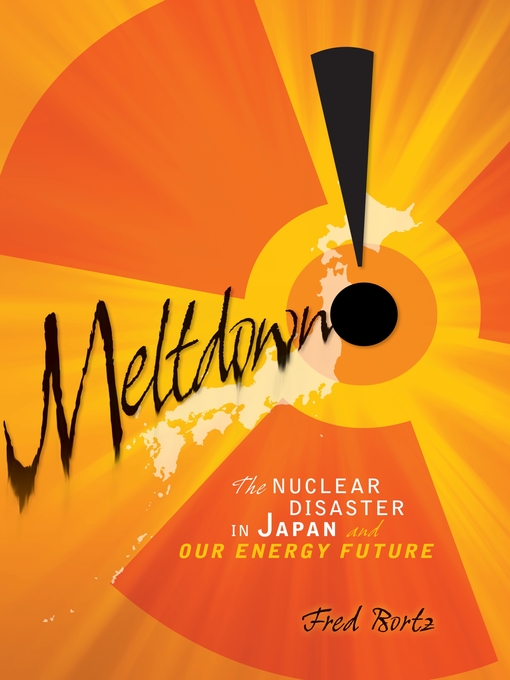-
Creators
-
Publisher
-
Release date
January 1, 2012 -
Formats
-
Kindle Book
-
OverDrive Read
- ISBN: 9781512452983
-
EPUB ebook
- ISBN: 9781512452983
- File size: 12005 KB
-
-
Languages
- English
-
Levels
- ATOS Level: 7.4
- Lexile® Measure: 1000
- Interest Level: 4-8(MG)
- Text Difficulty: 5-7
-
Reviews
-
School Library Journal
May 1, 2012
Gr 5-9-This title covers the nuclear disaster at Fukushima from the first tremor of the Great Tohoku Earthquake to the aftermath of the meltdown. Bortz uses the present tense to engage readers though this sometimes makes the narrative difficult to follow. A short history and detailed description of nuclear power is full of scientific explanations that can be daunting to readers unfamiliar with the concepts, but the information is valuable. The author also examines the nuclear disasters at Three Mile Island and Chernobyl. Although some topics are discussed in great detail, others, such as the harm caused by radiation, are glossed over. The last chapter tackles the question of what this recent incident means for our energy future, providing a look at several options but leaning heavily toward properly planned and regulated nuclear plants as the answer. Full-color photographs and detailed diagrams appear on each spread. Purchase widely for the timeliness of the topic, but make sure you have a variety of alternative energy books on your shelves to go with it.-Heather Acerro, Rochester Public Library, MN
Copyright 2012 School Library Journal, LLC Used with permission.
-
Kirkus
February 1, 2012
A physicist examines the latest nuclear disaster and its ramifications for the world's energy future. On March 11, 2011, at 2:46 p.m., the biggest earthquake in Japan's history hit the Tohoku region, northeast of Tokyo. A wall of water as high as 128 feet and 110 miles wide surged onto the closest land, damaging or destroying more than 125,000 buildings. Thirty thousand people were killed, injured or missing, and more bad news was to come: Three nuclear reactors were about to undergo meltdowns. Using the disaster as a case study to examine how earthquakes, tsunamis and nuclear reactors work, Bortz offers a clearly written volume, nicely embellished with photographs, maps and diagrams. All lead into the key question: "Why would any government take the risk of using nuclear power?" In a straightforward, dispassionate tone, he proceeds to answer his own question and lay out the potential of other energy options--hydroelectric, wind, geothermal and solar. Given the catastrophe that spawned this volume, the discussion is curiously non-alarmist, telling young readers that future energy decisions are theirs to make and that wise choices rooted in solid information will be crucial. Regardless of tone, this clear and wide-ranging introduction to essential energy issues has much to offer. (glossary, source notes, bibliography, further reading, websites, index, author's note) (Nonfiction. 11-18)COPYRIGHT(2012) Kirkus Reviews, ALL RIGHTS RESERVED.
-
Booklist
February 1, 2012
Grades 7-10 The first chapter head Earthquake! Tsunami! Meltdown! and frequent use of present-tense narrative cranks up the melodrama in this account of the Great Tohoku Earthquake of March 2011 and the tsunami-triggered meltdowns at the Fukushima nuclear facilities. Bortz surrounds his blow-by-blow description of the catastrophe with an explanation of what causes earthquakes, histories of the discovery of nuclear fission and the growth of the nuclear-power industry, and relatively detailed analyses of the causes and effects of other nuclear disasters. After (arguably) concluding that the still-ongoing disaster is much worse than Three Mile Island and not as bad as Chernobyl, he closes with a pro-nuclear look at alternative energy sources. Maps, charts, color photos of tsunami-wracked landscapes, and a well-maintained update page on the author's website enhance this broadly informative, if not exactly even-handed, view of the disaster and its lingering effects.(Reprinted with permission of Booklist, copyright 2012, American Library Association.) -
The Horn Book
July 1, 2012
Bortz clearly explains the science underlying the 2011 disaster at Japan's Fukushima Daiichi nuclear power plant. After a discussion of earthquakes and tsunamis, the focus shifts to nuclear physics, notorious nuclear disasters (including Fukushima), and the debate about the safety of nuclear power and its alternatives. Color diagrams and photographs effectively illustrate the aftermath of the disasters. Reading list, websites. Bib., glos., ind.(Copyright 2012 by The Horn Book, Incorporated, Boston. All rights reserved.)
-
Formats
- Kindle Book
- OverDrive Read
- EPUB ebook
subjects
Languages
- English
Levels
- ATOS Level:7.4
- Lexile® Measure:1000
- Interest Level:4-8(MG)
- Text Difficulty:5-7
Loading
Why is availability limited?
×Availability can change throughout the month based on the library's budget. You can still place a hold on the title, and your hold will be automatically filled as soon as the title is available again.
The Kindle Book format for this title is not supported on:
×Read-along ebook
×The OverDrive Read format of this ebook has professional narration that plays while you read in your browser. Learn more here.




